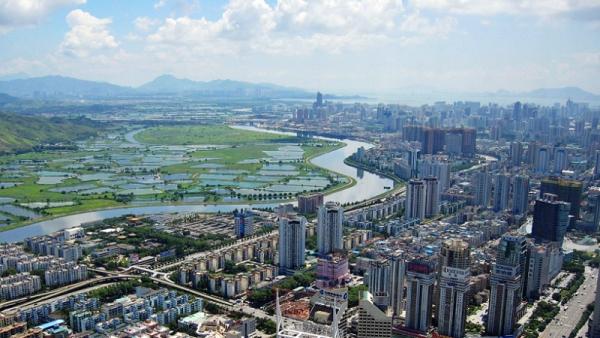Shenzhen

James Laurenceson, Deputy Director, Australia-China Relations Institute, University of Technology Sydney |
Can China become an innovation-led, high income country? Shenzhen, a Prefecture-level city bordering Hong Kong SAR, provides some answers.
1. In 2014 Shenzhen’s per-capita income was RMB149,497, or $US24,259.[1] In Nanshan district, described by Bloomberg as the technology heartland of Shenzhen, it was $49,730.[2] This compares with:
- The World Bank threshold for classification as a high-income country in 2014 of $12,735.[3]
- OECD countries such as Portugal: $22,132 and Korea: $27,971.[4]
- Hong Kong SAR: $40,170 and Singapore: $56,285.[5]
2. Previously known as a low value-added manufacturing hub, in 2014 the services sector accounted for 57.3 percent of Shenzhen’s GDP.[6]
3. In 2014 Shenzhen displaced Hong Kong SAR to become ranked as Greater China’s most competitive city. Hong Kong SAR had previously held the top spot since 2005.[7]
4. In 2015 Shenzhen was named as a global top five start-up hub for the future by US magazine Inc., a publication focusing on small and medium fast-growing businesses.[8]
5. In 2014, research and development expenditure accounted for 4.02 percent of Shenzhen’s GDP. [9] In Hong Kong SAR it was 0.74 percent.[10]
6. In Patent Cooperation Treaty applications, Shenzhen hosts five companies that rank in the top 50.[11]
7. Shenzhen now serves as the global headquarters of leading manufacturing and tech companies including: [12]
- Tencent, which has over one billion monthly active users across its desktop platform QQ and mobile instant message app Wechat.
- Huawei, the world’s largest telecommunications equipment manufacturer.
- BGI, the supplier of 50 percent of the world’s gene sequencing capacity.
- BYD, the world’s largest supplier of rechargeable batteries.
- DJI, which produces 70 percent of the world’s civilian drones.
Endnotes
This fact sheet was prepared by Professor James Laurenceson, Deputy Director, Australia-China Relations Institute, University of Technology Sydney.
[1] GDP in RMB is from CEIC database. This is converted to $US using a period average exchange rate of 6.1625. http://en.xinfinance.com/html/Economies/Regional/2015/59099.shtml
[6] CEIC database
Author
Professor James Laurenceson, Deputy Director, Australia-China Relations Institute, University of Technology Sydney

